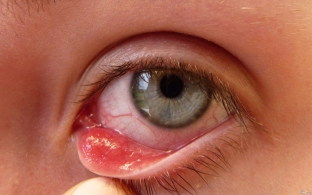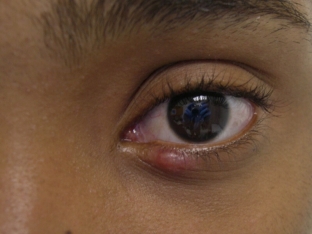All glands of external secretion located on the human body perform one of the most important functions of the body – protective. Due to the allocation of a special secret, they protect the tissues of the body from various kinds of pathological damage. Such glands are located in the edges of the eyelids, they are called meibomian. Under the influence of pathogenic factors, diseases of the meibomian glands can develop: barley and chalazion. The clinical picture of these pathologies is largely similar, which is why it is important to correctly diagnose diseases of the glands of the eyelids. The main differences between barley and chalazion are described by estet-portal.com.
Peculiarities of the clinical course of diseases of the glands of the eyelids
Meibomian glands are located on the edges of the human eyelids and are altered sebaceous glands. On average, about 40 of these glands are located in the upper eyelid, and about 30 – in the human lower eyelid. Their secret is fatty in nature, it lubricates the eyelids, thus protecting them from wetting with tears. As a result of exposure to infectious agents or obstruction of the excretory ducts of the meibomian glands, common diseases such as stye or chalazion can develop. The main clinical sign of these pathologies is the appearance of a rounded formation on the eyelid, which causes concern to patients. Features of the clinical picture help not only to distinguish barley from chalazion, but also determine further treatment tactics for diseases of the glands of the eyelids.
Glands of the eyelid:
- barley – acute purulent inflammation of the glands of the eyelids;
- what features distinguish chalazion from barley;
- methods of treatment of diseases of the glands of the eyelids.
Barley – acute purulent inflammation of the glands of the eyelids
Barley is an acute purulent inflammation of the glands of the eyelid, most often meibomian. This disease is most often caused by Staphylococcus aureus, and can occur in two forms: external and internal. The external barley is located on the edges of the eyelids, where the excretory ducts of the glands of the eyelids are directly located, and the internal one can be seen only when the eyelid is everted. In the clinical picture of barley, it is important to highlight the following symptoms:
- at the onset of the disease, the patient feels discomfort at the edge of the eyelid, especially when squinting;
- a little later, there is swelling of the eyelid, as a result of the appearance of an infiltrate;
- as the severity of edema increases pain;
- on the 2-3rd day of the disease, a purulent "head" appears in the region of the ciliary edge of the eyelid;
- on the 4th day, it opens, and pus and a necrotic "rod" are released;
- after opening, the symptoms of the disease gradually disappear.

What features distinguish chalazion from barley
Halazion – it is a painless, firm, rounded mass resulting from obstruction of the excretory duct of the meibomian gland. By its nature, chalazion is a chronic inflammation of the eyelid gland. A retention cyst is formed in the tarsal plate, which gradually increases, then its dense capsule is formed. Halazion – it is not a formation soldered to the skin. Distinguishes chalazion from barley in the first place, a high density of formation and the absence of any painful sensations. The skin over the formation is easily displaced, its color remains normal. Since there are often no symptoms that disturb the patient with chalazion, this disease is, first of all, a cosmetic defect.

Methods of treatment of diseases of the glands of the eyelids
After successful differential diagnosis of eyelid diseases, it is necessary to start their treatment. With barley, conservative therapy is prescribed: topical application of drops and ointments containing antibacterial drugs is recommended. Dry heat gives a good effect, while "damp heat" strictly prohibited – it provokes the formation of new abscesses. With frequent recurrence of barley, patients are prescribed restorative therapy. The most effective treatment for chalazion is surgical removal of the formation. Perpendicular to the edge of the eyelid, an incision is made in the palpebral conjunctiva, and it is important to remove the formation very carefully so as not to open its capsule.







Add a comment